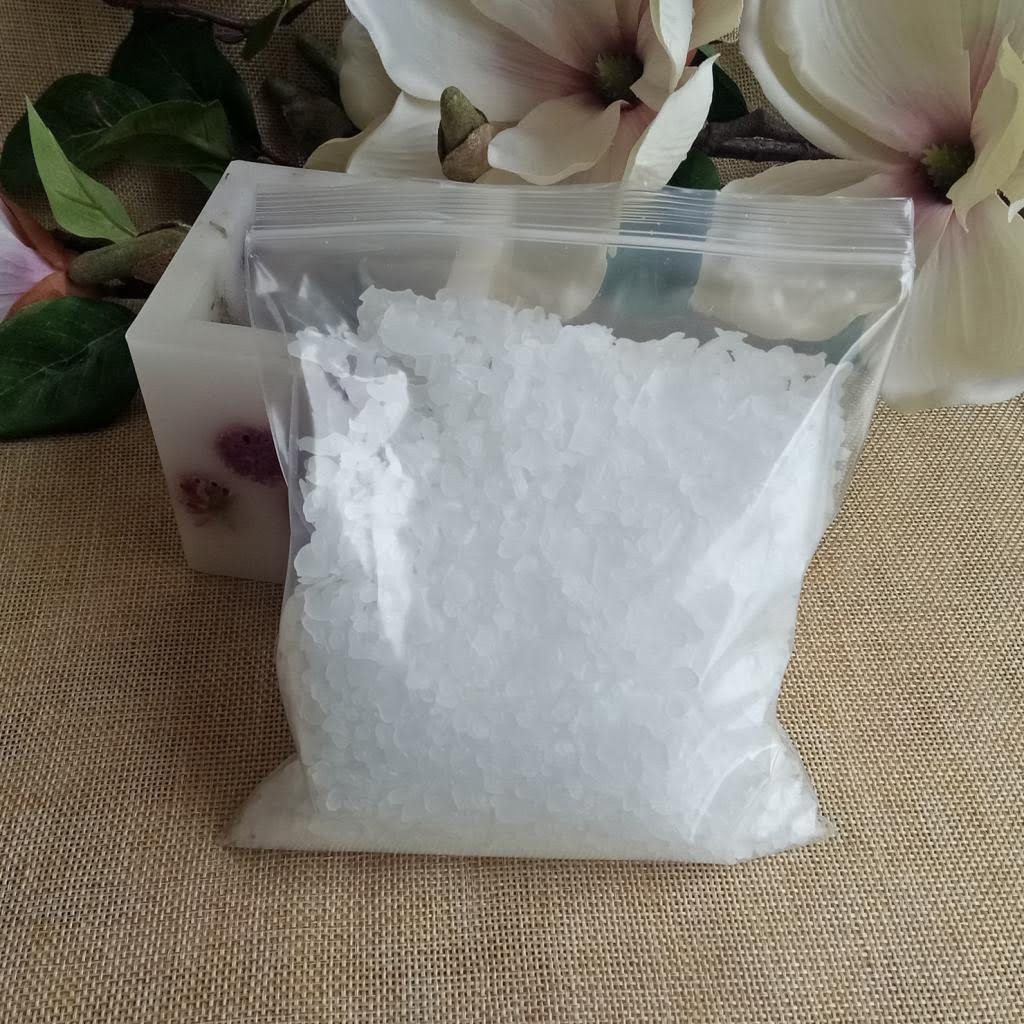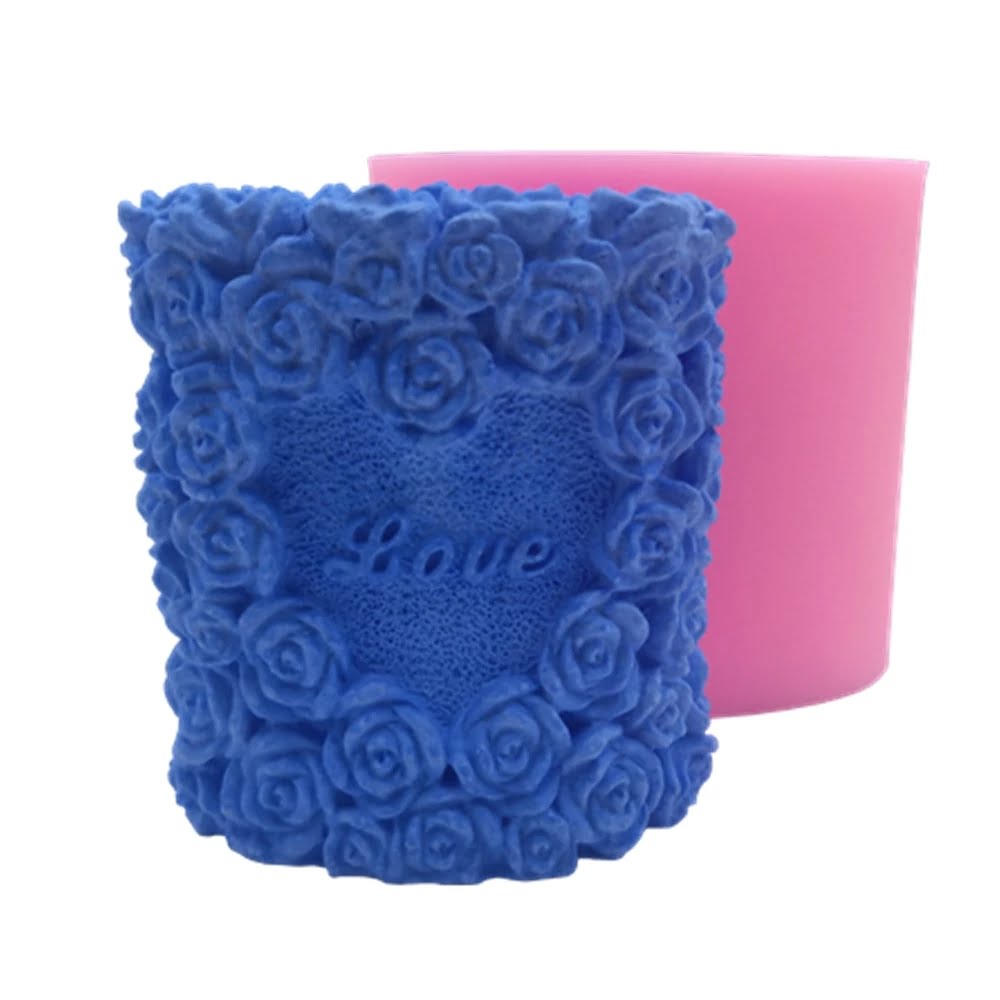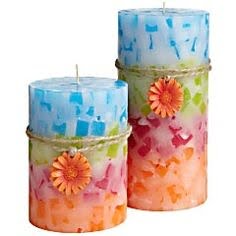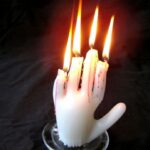When it comes to candles, scent plays a crucial role in creating an enchanting and immersive experience. The right fragrance can transport you to another world, evoke memories, and set the perfect ambiance for any occasion. But have you ever wondered why some candles seem to emit a stronger scent than others? This is where the concept of “hot throw” comes into play in the art of candle making.
So, what exactly is a hot throw in candle making? A hot throw refers to the strength and intensity of fragrance released when a scented candle is burning. It is that wonderful moment when you light your candle, and its scent begins to fill the room, creating an inviting and comforting atmosphere. Achieving a strong hot throw requires careful consideration of various factors during the candle-making process, including ingredients, techniques, and testing.
The importance of scent in candle making cannot be overstated. A beautifully scented candle has the power to transform any space into a sanctuary and enhance your overall well-being. However, not all candles are created equal when it comes to their ability to fill a room with fragrance. Understanding hot throw is essential for candle makers who strive to create high-quality products that provide an unforgettable olfactory experience for their customers.
In the following sections, we will delve deeper into the definition of hot throw and explore the different factors that influence its strength. We will also uncover ingredients and techniques that can help enhance hot throw in candle making while avoiding common mistakes that may diminish its potency. Additionally, we will discuss testing and evaluating methods used by professionals in order to achieve the ideal balance between scent strength and longevity.
So if you’re passionate about candle making or simply curious about how these delightful creations deliver such captivating scents, join us on this aromatic journey as we uncover the secrets behind achieving a strong hot throw in candle making. Gather your favorite candles; let’s dive right into this aromatic adventure.
The Importance of Scent in Candle Making
When it comes to candle making, scent is a vital element that can make or break the overall experience for customers. The right aroma can evoke emotions, create ambiance, and even transport individuals to different places and memories. As such, understanding the importance of scent in candle making is crucial for candle makers looking to create the perfect product.
Scent plays a significant role in enhancing the mood and atmosphere that candles can create. Whether it’s a relaxing lavender scent for an evening spa-like experience or a warm vanilla fragrance for cozy nights at home, the aroma emitted by a candle sets the tone and creates a sensory experience for individuals. In fact, studies have shown that certain scents have the power to promote relaxation, improve concentration, and alleviate stress.
Moreover, scent acts as a key factor in triggering memory recall. The olfactory system is directly linked to the part of our brain responsible for memory and emotions. By creating candles with unique fragrances, candle makers have the ability to invoke personal memories or transport individuals to specific times and places through their sense of smell.
To ensure high-quality candles with enticing scents, candle makers must understand what hot throw is in candle making. Hot throw refers to the strength of fragrance released when a candle is burning. This term specifically relates to how noticeable and impactful the aroma becomes once heat is applied during burning.
Definition
In the world of candle making, achieving a strong and appealing scent is crucial. The scent of a candle can create a soothing atmosphere, evoke emotions, and even become a signature element of a brand. Understanding the concept of hot throw is essential to creating candles that have a pleasant and long-lasting fragrance.
Hot throw refers to the strength and intensity of the fragrance emitted from a burning candle. When a candle is lit, the heat from the flame melts the wax, causing it to release the fragrance oils evenly into the air. This process is known as hot throw because it occurs when the candle is in its “hot” state.
There are several factors that can affect the hot throw of a candle. These include the type and amount of fragrance oil used, the type and quality of wax, wick choice, container size, and even external factors such as room temperature. To achieve an optimal hot throw, it is important for candle makers to consider each of these elements and carefully choose their ingredients and techniques.
To enhance the hot throw in candle making, there are certain ingredients that can be incorporated into the formulation. Some popular choices include additives like stearic acid or Vybar which help bind fragrance molecules to the wax, increasing their diffusion rate when melted. Another effective ingredient is beeswax which has natural scent-throwing properties. By experimenting with different combinations of ingredients, candle makers can find what works best for their desired fragrance strength.
Understanding hot throw in candle making is key to creating candles with an enticing aroma that fills any space they are placed in. By paying attention to various factors influencing hot throw and utilizing appropriate techniques along with suitable ingredients, candle makers can create candles that offer an unforgettable olfactory experience for their customers.
Factors Affecting Hot Throw in Candle Making
When it comes to creating a strong hot throw in candle making, there are several factors that can influence the intensity and longevity of the scent. Understanding these factors is crucial in order to achieve a high-quality candle that fills the room with a delightful fragrance.
One of the main factors that affect the hot throw is the type and amount of fragrance oil used in the candle. The quality of the fragrance oil plays a significant role as well. Low-quality oils or oils that have not been properly mixed can result in a weak hot throw. It is important to use high-quality fragrance oils specifically designed for candle making and follow the recommended usage rate for optimal scent distribution.
The wax type used also affects the hot throw of a candle. Some waxes, such as soy wax, have a better scent throw compared to others. Soy wax tends to hold onto fragrances more effectively and release them slowly over time.
On the other hand, paraffin wax may have a stronger initial scent but may not provide a long-lasting hot throw. The size and type of wick used can also influence how well the scent is distributed when the candle is burning.
In addition to fragrance oil and wax, external factors like temperature and air circulation can impact the hot throw of candles. Candles tend to have a stronger hot throw when burned in smaller rooms with less air circulation. Warmer temperatures can also enhance the diffusion of fragrance molecules into the surrounding air.
By taking these factors into consideration during the candle making process, it is possible to create candles with an impressive hot throw that will fill any space with beautiful scents.
| Factors | Impact on Hot Throw |
|---|---|
| Type and amount of fragrance oil | Can result in weak or strong hot throw depending on the quality and quantity used |
| Wax type | Soy wax tends to have a better scent throw compared to paraffin wax |
| Size and type of wick | Can influence how well the scent is distributed while burning |
| Temperature and air circulation | Warmer temperatures and less air circulation can enhance the hot throw of candles |
Ingredients That Enhance Hot Throw in Candle Making
Ingredients play a crucial role in determining the hot throw of a candle. The hot throw refers to the strength and intensity of the fragrance that is emitted when the candle is lit and begins to melt. By using certain ingredients, candle makers can enhance the hot throw and create candles that fill a room with their delightful aroma.
One key ingredient that enhances the hot throw is fragrance oil. High-quality fragrance oils are specifically formulated for use in candles and have been designed to provide optimal scent performance. These oils are made from a blend of natural and synthetic ingredients, carefully selected and blended to create a scent that is both long-lasting and true to its intended fragrance.
Another ingredient that can enhance the hot throw is the type of wax used. Different waxes have different melting points, which can affect how well the fragrance is dispersed throughout the candle as it melts. Soy wax, for example, has a lower melting point than paraffin wax, which allows it to release fragrances more quickly and effectively.
In addition to fragrance oil and wax, other additives such as botanicals or colorants can also contribute to enhancing the hot throw of a candle. Botanicals like dried flowers or herbs can release their natural scents when heated, adding an extra layer of fragrance to the candle. Colorants can also help create an immersive sensory experience by creating visual appeal while complementing the overall scent of the candle.
Overall, selecting high-quality fragrance oils, choosing an appropriate wax, and considering additional additives are essential steps in enhancing the hot throw of a candle. By carefully selecting these ingredients and experimenting with different combinations, candle makers can create candles that not only look beautiful but also fill any space with their captivating scents.
Techniques to Achieve a Strong Hot Throw in Candle Making
In candle making, achieving a strong hot throw is essential for creating a delightful candle experience. The hot throw refers to the scent released by the candle when it is lit and the wax has melted. A strong hot throw ensures that the fragrance fills the room, creating an inviting and relaxing atmosphere.
There are several techniques that can be used to enhance the hot throw in candle making. One important technique is using the appropriate amount of fragrance oil. It is crucial to follow the recommended fragrance load for your specific wax type and container size. Adding too much fragrance oil can lead to poor burning performance or even damage to your candles, while using too little may result in a weak scent.
Another technique is properly warming up your containers before pouring the wax. Preheating your containers helps reduce any air pockets or bubbles that can interfere with the release of fragrance when burned. You can warm up glass jars by placing them in an oven at a low temperature or using a heat gun. Metal containers can also be heated using a double boiler method. By warming up your containers, you create optimal conditions for releasing scent during burning.
Additionally, proper wick selection plays a crucial role in achieving a strong hot throw. Using a wick that is too small may not provide enough heat for optimum scent release, resulting in a weak hot throw. On the other hand, using a wick that is too large can lead to excess heat, causing sooting and poor burning performance. It is important to carefully match your wick size with your chosen wax type and container size to achieve the best results.
To summarize, achieving a strong hot throw involves using the right amount of fragrance oil, preheating containers before pouring wax, and selecting the appropriate wick size. By implementing these techniques into your candle making process, you can enhance the hot throw of your candles and create an enjoyable aromatic experience for your customers.
| Technique | Description |
|---|---|
| Appropriate Amount of Fragrance Oil | Follow recommended fragrance load to avoid weak or overpowering scent. |
| Preheating Containers | Warm up containers before pouring wax to eliminate air pockets and promote optimal fragrance release. |
| Proper Wick Selection | Select the right wick size based on wax type and container size to ensure efficient heat and scent diffusion. |
Common Mistakes That Affect Hot Throw in Candle Making
Achieving a strong hot throw is crucial when it comes to making candles that fill the room with a pleasant and long-lasting fragrance. However, there are several common mistakes that can negatively affect the hot throw of your candles. By being aware of these mistakes, you can avoid them and increase the success rate of creating a candle with an impressive scent throw.
One common mistake that often affects the hot throw of candles is using an incorrect wick size. The size of the wick plays a significant role in how much fragrance is released while the candle is burning. If you use a wick that is too small for the diameter of your candle, it may not generate enough heat to melt the wax evenly, resulting in a poor scent throw.
On the other hand, using a wick that is too large can lead to excessive heat, causing the fragrance oil to evaporate quickly and overpowering the room. It is important to carefully choose the appropriate wick size based on factors such as candle diameter, wax type, and fragrance load.
Another mistake that many candle makers make when trying to achieve a strong hot throw is not allowing their candles to cure properly. Curing refers to the period of time after follow noopener”>pouring the wax into containers where it needs to sit undisturbed to develop its full scent potential. This process allows for better fragrance distribution within the wax, resulting in a more noticeable hot throw.
Ignoring or rushing through this curing process can prevent your candles from achieving their maximum scent strength. It is recommended to give your candles at least 48 hours or longer to cure before lighting them.
Lastly, failing to measure fragrance oils accurately can have a negative impact on hot throw as well. Using too little fragrance oil may result in weak scent diffusion when burning, while using too much can cause issues such as uneven burning or smoking. It is essential to follow recommended guidelines for fragrance load and measure the oils accurately using a scale. This will ensure that your candles have just the right amount of fragrance oil for optimal hot throw.
By avoiding these common mistakes, candle makers can enhance the hot throw of their candles and create a more enjoyable sensory experience for customers and themselves. Taking the time to select the correct wick size, allowing for proper curing, and measuring fragrance oils accurately are all important steps in achieving a strong and satisfying hot throw in candle making.
Testing and Evaluating Hot Throw in Candle Making
When it comes to candle making, achieving a strong and pleasing scent is essential for creating the perfect candle experience. This is where the concept of hot throw comes into play. Hot throw refers to the strength of the fragrance that is released when a candle is burning. It is an important factor to consider as it directly affects the overall sensory experience and satisfaction of customers.
Importance of Testing and Evaluating Hot Throw
Before releasing your candles into the market, it is crucial to thoroughly test and evaluate their hot throw. This process allows you to ensure that the fragrance fills the space effectively and offers a delightful experience for those who use your candles. By testing different variables and evaluating hot throw, you can make necessary adjustments to enhance the quality of your products.
Methods for Testing Hot Throw
There are several methods you can employ to test the hot throw of your candles. One common method involves lighting up the candle in a controlled testing environment, such as a small room or enclosed space, to observe how far the scent travels and how strong it remains over time. Another method involves conducting blind tests with potential customers or trusted individuals who provide feedback on their experience with the candle’s fragrance.
Evaluating Hot Throw Results
Once you have completed your testing, it’s important to evaluate the results accurately. Take note of key observations such as the distance at which the fragrance was detectable, its intensity over time, and any variations in scent quality. This will allow you to identify areas for improvement and make any necessary adjustments in terms of ingredients used, wick type, or candle design.
Final Thoughts
In conclusion, achieving a strong hot throw is essential in candle making to enhance the overall candle experience. The scent of a candle plays a significant role in creating the perfect ambiance and mood, making it important for the fragrance to fill the room when the candle is lit. Understanding the concept of hot throw and the factors that affect it is crucial for candle makers to produce high-quality candles.
There are several factors that can affect the hot throw of a candle, including the type and amount of fragrance oil used, as well as the quality of waxes and additives. By choosing high-quality ingredients that are specifically designed to enhance hot throw, candle makers can ensure a more powerful and long-lasting scent when their candles are burned.
Using proper techniques during the candle making process can also greatly impact the hot throw. This includes ensuring that the fragrance oil is properly dispersed throughout the wax, using appropriate wick sizes, and allowing sufficient curing time for the candle to fully develop its scent.
It is also important for candle makers to be aware of common mistakes that can negatively affect hot throw, such as using too much fragrance oil or improper wick trimming. Through regular testing and evaluation of hot throw, candle makers can fine-tune their techniques and make necessary adjustments to consistently achieve optimal results.

Welcome to my candle making blog! In this blog, I will be sharing my tips and tricks for making candles. I will also be sharing some of my favorite recipes.





